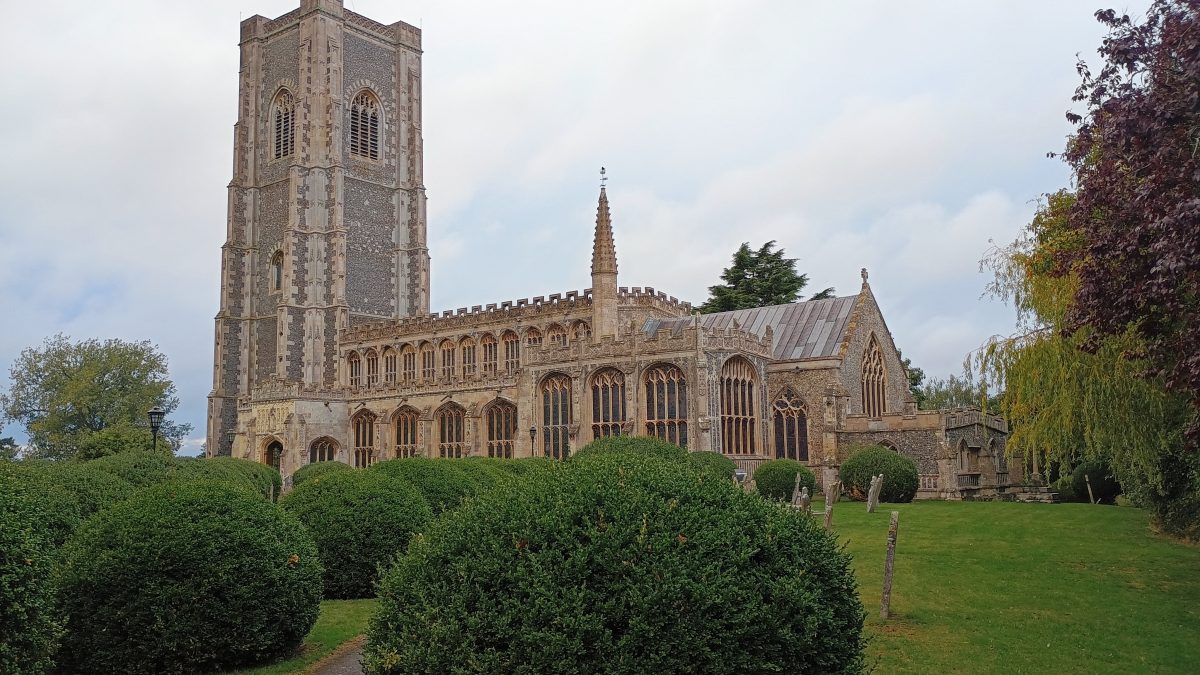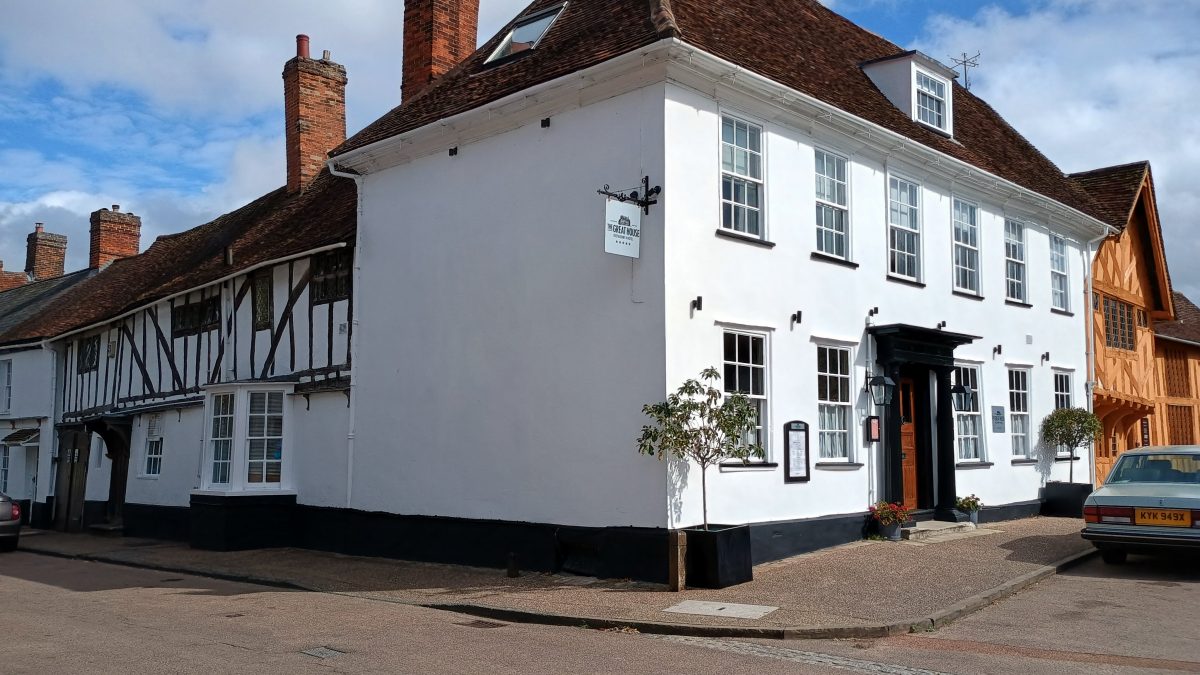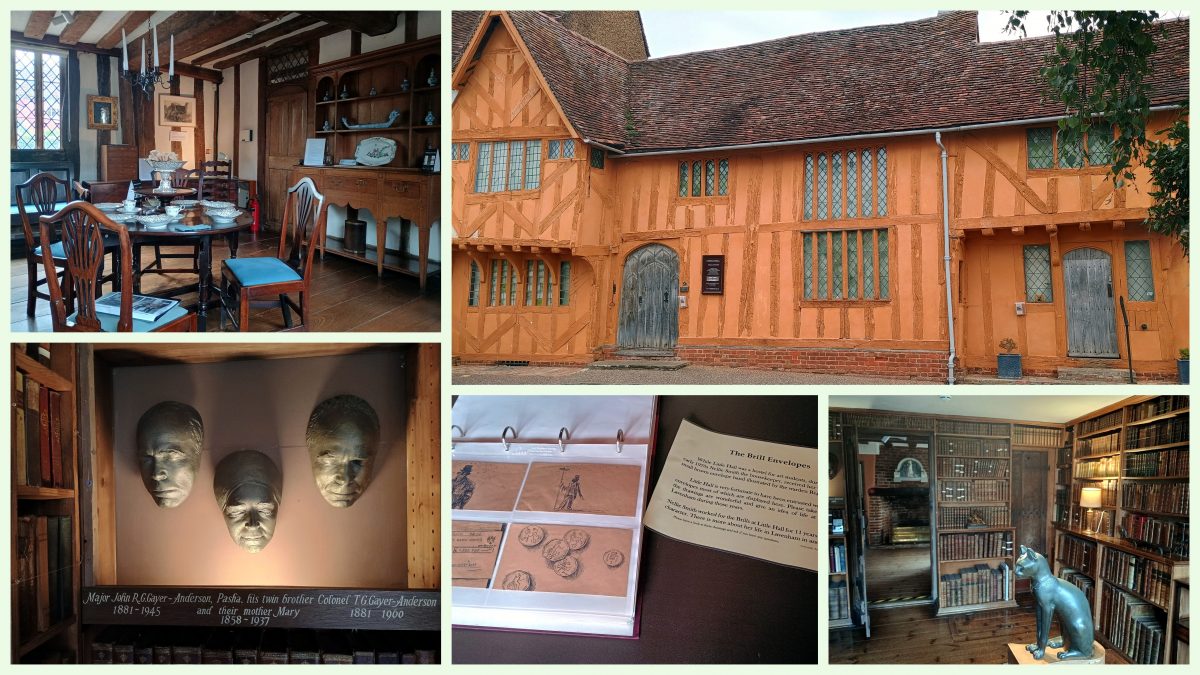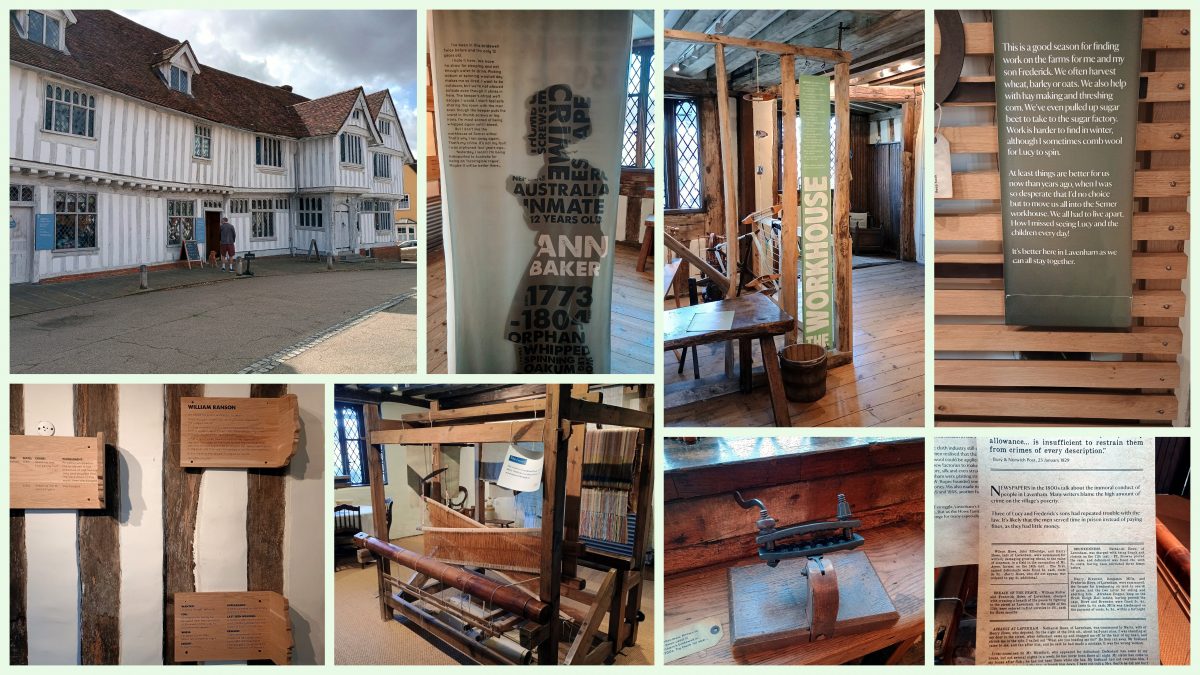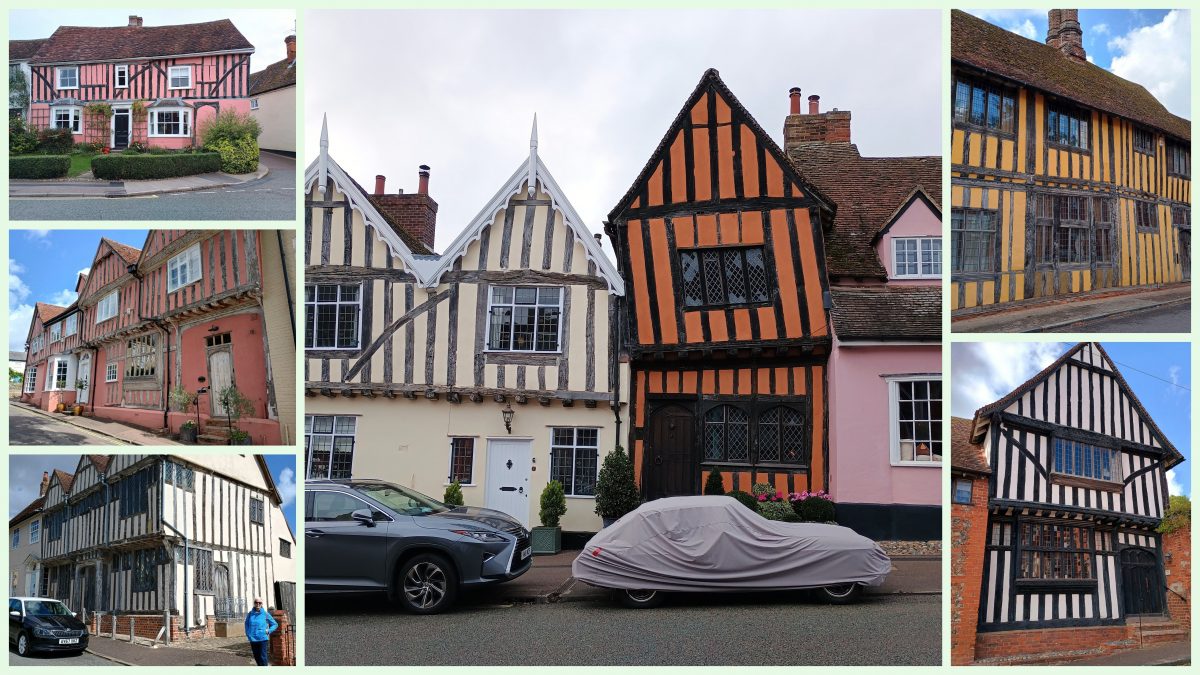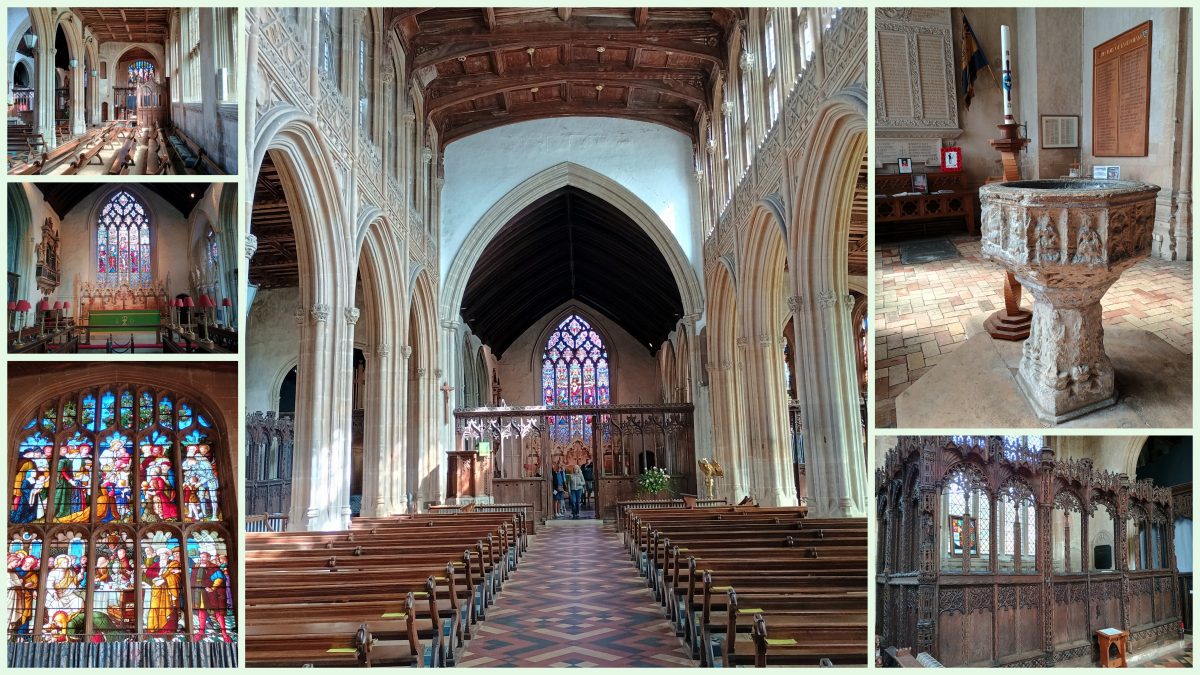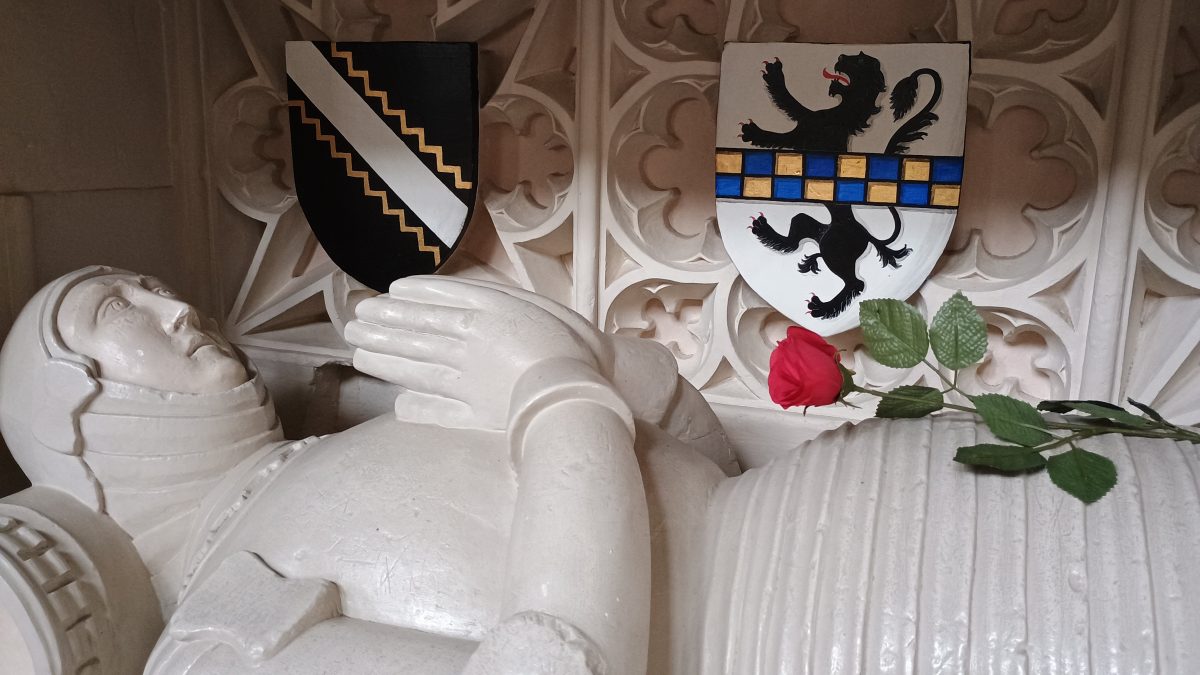Well, not quite in the spirit of Thomas Hardy, but still good to report on a quickly organised two night break in Suffolk that was both relatively last minute and quirky but proved to be an unadorned delight. Surprising what you can pack into a leisurely short break without even trying. And yes, we have of course been to Lavenham before but, as we shall see, we clearly remembered very little.
Beginning at the, err, beginning, Lavenham is without doubt a lovely Suffolk village – as Lovelavenham would say, you do indeed take a step back in time as you explore. Nestled in the heart of the Suffolk countryside and surrounded by ancient woodlands, most would say Lavenham is one of the most important and best-preserved Medieval villages in England. Picture tiny streets lined with timber-framed buildings, an expansive market square surrounded by iconic Medieval and Tudor halls and a thriving community with independent shops, cafés and restaurants with plenty to see and do. But first, the accommodation.
I’d chosen the ‘restaurant with rooms’ (but also known as a hotel) but, not unsurprisingly, called the Great House Hotel and Restaurant, a centuries old Grade II listed building in the market square. Both the bistro style restaurant and bar were small but perfectly formed. The blend of history and contemporary gave you a taste of what to expect from your food and drinks – superb British country side food infused with French and Mediterranean cuisines, paired with a sophisticated wine and cocktail menu. Whilst we were there, we had a superb “Thursday Piano Dinner” which we thought great value for money and breakfasts were superb on both days. We had a lovely room, quirky but massive (a king sized bed for each of us), although access to the ensuite might have been tricky if under the influence of sufficient alcohol!! Sad to have to report Mrs. No Name’s initial view that it had the look of an opium den straight out of Sherlock Holmes. I should stress that this notion was quickly revised and the hotel ended up with the highest accolade – she ‘wouldn’t not stop there‘ again. High praise indeed.
On the first day (before we had even checked in to our hotel), we had indulged in a little lunch at the Swan at Lavenham and then visited the first of our attractions and one we knew we had not previously seen. The Little Hall is one of the oldest timber framed buildings in the best preserved of the Suffolk wool towns. Its history mirrors the changing fortunes of Lavenham. Built in the 1390s for the Causton family of clothiers, enlarged and improved circa 1425-50, it was then ‘modernised’ in Tudor times by the addition of a fireplace and upper floor in the hall. So, you can picture the austerity of this 14th Century house when the Caustons first lived in it and then contrast the starkness of the Middle Ages with the beautiful furnishings and artefacts in the house today. There are only seven rooms to wander through but you do indeed discover a range of treasures, including the study with exotic Persian panels and the spectacular upstairs chamber with its striking crown-post. The Gayer-Anderson twin brothers, soldiers with a shared interest in art and collecting, and themselves talented artists in drawing, painting and sculpture, rescued Little Hall in the 1920-30s and its largely down to them that you get a sense of a house changing over time. All the guides were friendly and informative, with a big shout out to Paul, whose introductory talk was full of detail and entertaining. This small museum is an absolute gem – run by volunteers, it has a great atmosphere and is full of genuinely interesting artefacts relating to the local area and beyond. Based within the 14th Century Hall House, the museum is packed with items such as antiques, pictures, books, china and art. The building itself is very attractive and is definitely one of the best timber-framed buildings in the area. Finally, we now know the real reason for the sudden decline of the wool industry in the area and no, I’m not going to tell you. ⁉️ We then had a short walk around the village to reacquaint ourselves with the historic architecture, including the infamous crooked house. (Oh, we also went for a cheeky pint at the The Cock Horse Inn near the village church (more on the latter later)
After breakfast the following morning we visited the National Trust owned Lavenham Guildhall, which we confidently predicted we had been in before, even though it was many years ago. It is therefore disappointing to discover that we could remember nothing of the interior and can now console ourselves only with the fact that our only previous foray must have been to the adjoining NT tea rooms! Anyways, the Grade I listed Guildhall has been many things over the years, starting life as the Guild of Corpus Christi (formed in 1529), then a Bridewell until 1787, when it became the local workhouse. Internally, the Hall holds exhibits that present the evolution of the guildhall from cloth trade to workhouse. It does this room by room by exploring the stories of those who have used the building over the last 500 years – and it does it very well indeed, using a wealth of material and source documentation. To reiterate, even with the flimsiest of defences that the last visit was thirty years ago, we clearly hadn’t been inside before. Otherwise we would have remembered that the NT had now set it up as a museum for both house and village. As such, it complements the Little Hall remarkably well but at the same time diminishes our status as upright citizens and upstanding patrons of the arts😧 .
Our confidence by now completely shredded to smithereens, we then followed our cursory Lavenham walk of the previous evening with a more purposeful ramble around the village to more fully appreciate the high number of listed buildings to be found throughout the town. As there are over 300 listed architectural gems, including timber-framed buildings dating back to the 14th Century, you can’t help but imagine the village as it was, brimming with industry as it manufactured its famous blue cloth (I may not have previously mentioned this very well known blue cloth). An oversight now remedied, it was the wealthy wool merchants of the area who sold the fabric far and wide and then built stunning properties with their profits, such as Little Hall and De Vere House which still stand proud in Lavenham today. Lavenham soon rose to become the 14th wealthiest town in Tudor England and wool profits were utilised to bolster this prosperous village. Both the stately church of St Peter and St Paul was erected with cathedral-like proportions and the Guildhall was constructed as a meeting place for the Catholic Guild that served local communities. It didn’t last that long though, did it! (Bit of Yorkshire realism there to counter any misty eyed romanticism).
We then moved on to the St. Peter and Paul church, a classic example of a grand edifice built on the back of the wealth of the wool trade and its merchants. The result is an architectural building of renown but cynics might wonder how many of these supposed places of worship were built off the back of a desire for power, prestige and influence rather than any spiritual desire. For those interested in the history, a little background follows, largely paraphrased from other sources: Rebuilding Lavenham church began following the Tudor victory at Bosworth in 1485. John de Vere, Lord of the Manor of Lavenham and Earl of Oxford was a supporter of King Henry VII, and his Captain General at Bosworth. Rebuilding the church was his idea to celebrate Henry’s victory and the defeat of Richard III. John de Vere asked the wealthy cloth merchants of Lavenham to help fund the rebuilding and chief among the merchants was Thomas Spring II. He died in 1486, leaving in his will £200 towards building the tower. His son Thomas III continued the rebuilding works, with the tower being completed in 1525. The church tower is worth a mention as it is unusually tall at 43 metres, and dominates the local landscape. Its history has both national and local significance. Surprise, surprise, It is decorated with the stars and shields of the de Veres and the merchant marks of the Spring family. It contains 8 beautiful sounding bells, and a clock. A spiral staircase leads all the way onto the roof (not open though), from where there are spectacular views of the countryside all around. As I said, privilege and prestige etc. although I should qualify any misgivings and mitigate my ignorance by pointing out it was often the method of development for the historical period in question.
Finished off the day with a piano dinner at the hotel. I hasten to add that we did not eat a piano – that would make me look even more ridiculous than usual – but it was accompanied by the very fine pianist / vocalist Elliot Porter. It was a delicious three course affair with excellent choices for each, accompanied with very fine wine. My only complaint was the same as usual and it’s a recurrent theme these days. I simply can’t handle three courses of this quality and quantity of food anymore, but I struggled on manfully because it was full of flavour and I’m a martyr to the cause.
On the final day (after another breakfast and check-out), we made our way the short distance to Long Melford, another of the Suffolk wool towns and home to the 16thC Melford Hall. In the interests of full disclosure (again), we both agreed we had been before and we both concluded that, although that was as maybe, we remained completely and sadly ignorant of the Hall interior. The hall was mostly constructed in the 16th century, incorporating parts of a medieval building held by the abbots of Bury St Edmunds which had been in use since before 1065. It has similarities to the nearby Kentwell Hall, as well as competitive owners. It passed from the abbots during the Dissolution of the Monasteries and was later granted by Mary I to Sir William Cordell. From Cordell it passed via his sister to Thomas and Mary Savage before being sold back into another male Cordell line. Then in 1786 it has been the seat of the Parker Baronets and is still lived in by the Hyde Parker family, although in 1960 it was taken over by the National Trust. Anyway, enough of this flim flam, let’s get on with it shall we?
After an unscheduled game of croquet on the Hall lawn (I was of course beaten), we went to the introductory talk at the entrance (excellent and we learned all about Cordell’s rivalry with Kentwell just up the road – as he was in effect mentored at Kentwell as a child he could, uncharitably or otherwise, be considered a tad ungenerous, but we let it go! The interior is both striking and very different from the grandeur of great houses such as Chatsworth and Melford’s interior feels lived-in and loved, something which is often missing from larger stately homes. The hall is a patchwork quilt of the taste of its different owners, and each room presents a new style, from the dark, panelled entrance hall with suits of armour and Tudor portraits, to the opulent surroundings of Lady Ulla’s boudoir – an elegant, chandeliered space upstairs. We thoroughly enjoyed our stroll around the rooms, where French and Dutch art and furniture vie with the Hall’s Tudor origins. Shout out to the Great Hall, the Blue Room and the room Beatrix Potter stayed in when visiting. A brief stroll around the grounds and then we were off to our final location.
Strolling up to Long Melford Church via the old Hospital – a Quadrangular red brick originally built by Sir William Cordell in 1573, but largely restored in 1847. Now alms houses, it was designed specifically to provide homes for 12 poor men, 2 women and a warden. The Church, known as the Holy Trinity, was built in the 15thC and is regarded by some as a superior building to that at Lavenham (see above). It is the longest church in Suffolk and includes a remarkable survival of the 14th century, an alabaster panel of the Adoration of the Magi. If you look closely at the picture in the collage, you can see they weren’t beyond a little sly humour, even in the 14th century.
Beyond it, you step through into the north chancel chapel where there are a number of Clopton brasses, impressive but not in terribly good condition (apparently), and then beyond that into the secretive Clopton chantry which includes the tomb of William Clopton. The rose on the tomb is associated with what is believed to be the oldest rent still paid anywhere in the United Kingdom (no I won’t, you’ll have to look it up). Other ‘features’ include the south chapel, which is also the last resting place of the Cordell family. Sir William Cordell’s tomb dominates that particular space (he was Speaker of the House of Commons don’t you know). In the collage, there is also a picture of the Church font, documented here primarily because one of Mrs. No Name’s ancestors was baptized here! Incidentally, whilst we were in this church, it absolutely torrented it down outside. When we were ready to leave, it was perfectly fine again. Divine providence? No, me neither! Also incidentally, there is a comprehensive and much more lucid overview of Holy Trinity at Great English Churches, which I recommend for its’ historical overview.
And that was the end of a packed two night break. All that remained was to head home and to not spare the horses.

